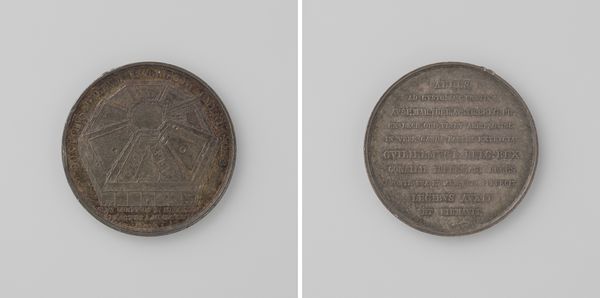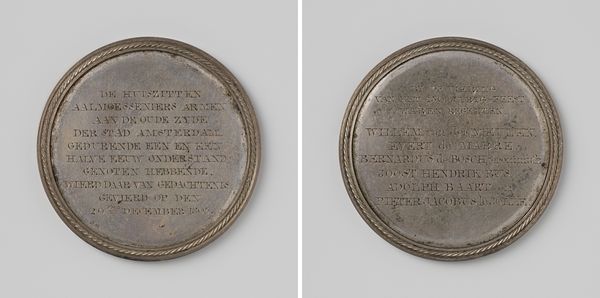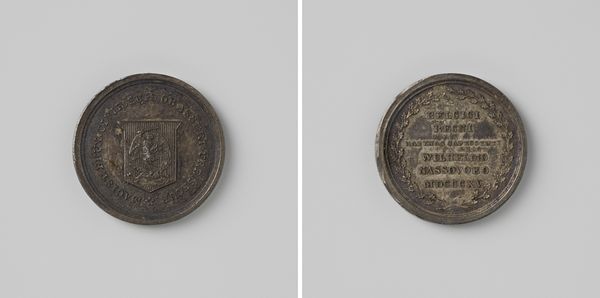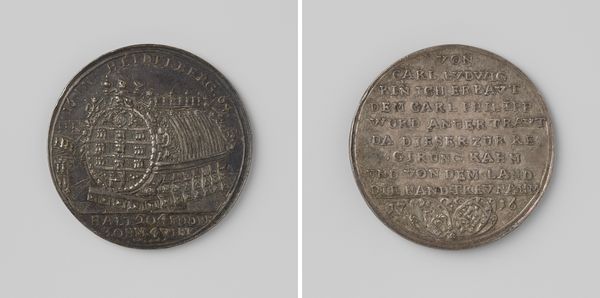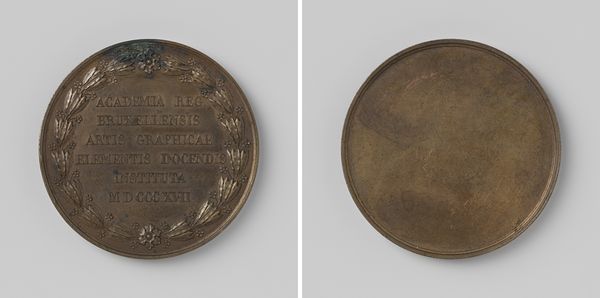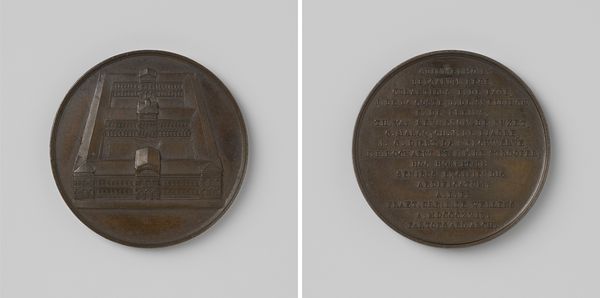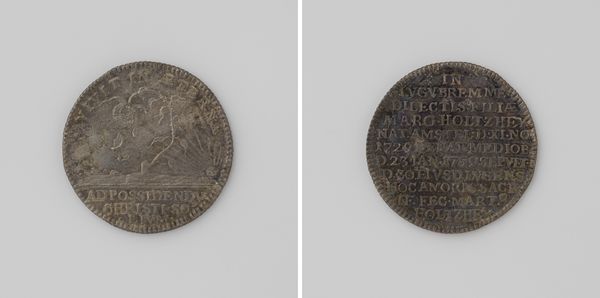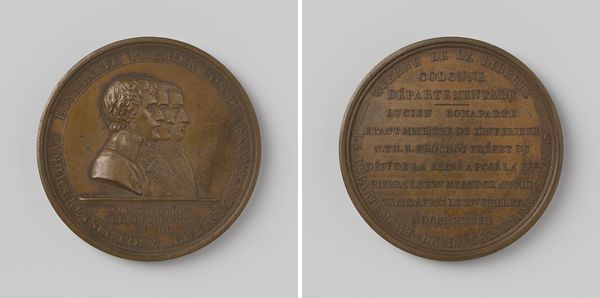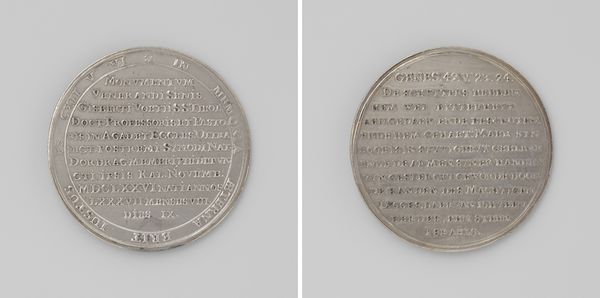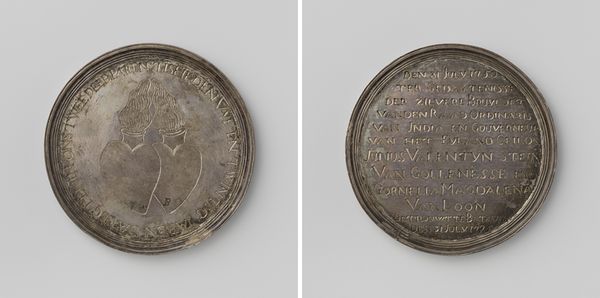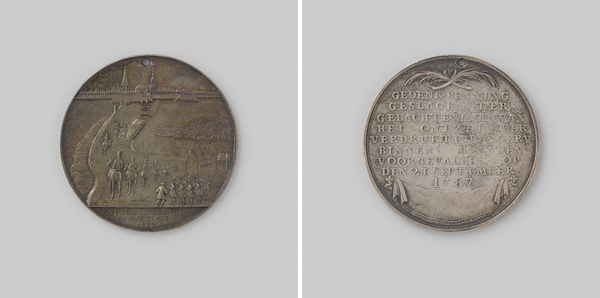
Willem Joseph, baron van Brienen, vijftig jaar regent van het Rooms-katholiek weeshuis te Amsterdam 1836
0:00
0:00
carving, print, metal, relief
#
portrait
#
neoclacissism
#
carving
# print
#
metal
#
relief
#
carved
#
history-painting
Dimensions: diameter 4.2 cm, weight 26.65 gr
Copyright: Rijks Museum: Open Domain
Editor: Here we have a commemorative medal from 1836, celebrating Willem Joseph, Baron van Brienen, and his fifty years as regent of the Roman Catholic orphanage in Amsterdam. It looks like it’s made of carved metal, and the overall impression is... official, almost bureaucratic. What stands out to you in this piece? Curator: The inscription certainly dominates. What’s powerful is the act of publicly commemorating someone's long-term service to a specific social institution. It reflects the 19th-century focus on civic duty and philanthropic work, doesn't it? What kind of statement do you think a city makes by choosing to honor institutional work like this? Editor: It definitely says something about their values. Like, it wasn't a military victory or a royal event, but service to orphans? That’s a deliberate message about who they admired. Curator: Precisely! This medal’s purpose wasn’t just to praise Van Brienen but also to promote that ideal. How do you think the design contributes to this political messaging? Editor: Well, the text is literally the main feature; the sheer volume gives it weight, authority. Curator: And that specific typeface also says something, doesn't it? That formal lettering emphasizes that Van Brienen is worthy of this honor, doesn’t it? Now, thinking about where these medals would circulate, how does that affect your understanding of its public role? Editor: Knowing it might be given as gifts, or kept as mementos, makes me think it was also about cementing the orphanage's reputation, too. A kind of PR for a good cause? Curator: Absolutely. It’s a piece of history communicating the values of a specific time and place through material culture. Very interesting how seemingly small object makes these points. Editor: I'm starting to think that everyday items can carry a lot of meaning if you know how to "read" them!
Comments
No comments
Be the first to comment and join the conversation on the ultimate creative platform.
